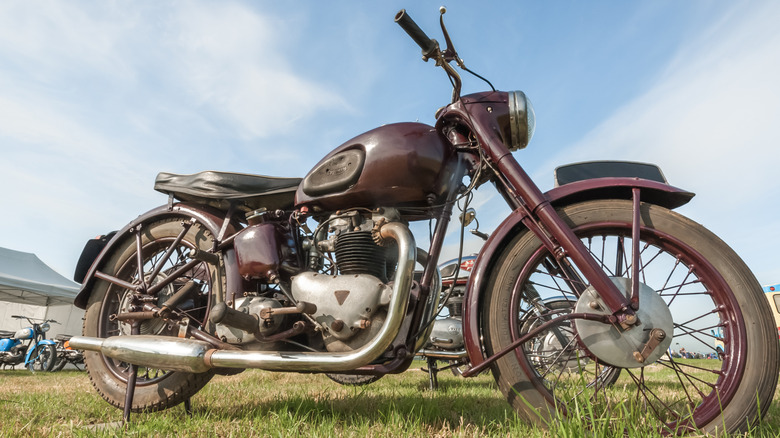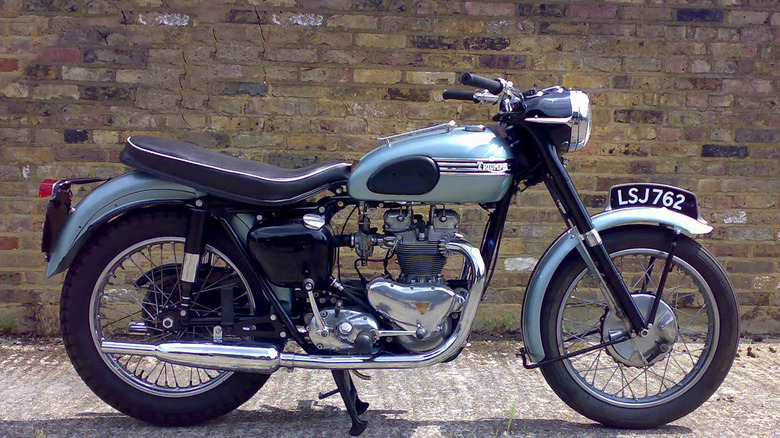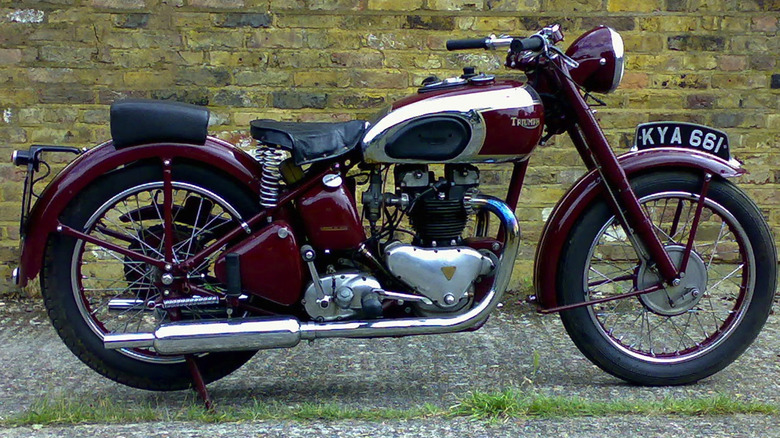3 Underappreciated Classic Motorcycles From The Early Days Of Triumph
Triumph in the 20th Century is known particularly for its two cylinder Bonneville and three cylinder Trident from the 1960s and 1970s, but there's more to the brand than that. The company has a history stretching back to 1885, and is only a year younger than Enfield, the world's oldest motorcycle line still in business. Also, Triumph's revival in the 1990s culminated in the resurgence of the Bonneville and its naked bike, the Speed Triple. As a result, some of the company's early achievements are overlooked.
The first Bonneville, in 1959, carried one of Triumph's last engines built with separate engines and gearboxes. This construction had served Triumph well through World War II and beyond, but the more compact and rigid combined 'unit' design was adopted by 1963.
While the unit construction 650cc twin-cylinder Bonneville and 750cc three-cylinder Trident capture the most attention, their predecessors still hold a place in motorcycling history and were also famous motorcycles at the time.
Tiger 100
The Tiger 100 was a 498cc twin cylinder motorcycle built under the Triumph brand from 1939 through 1973, with a break starting in 1940, when the factory in Coventry was bombed, through 1946. The last of the pre-unit Tigers was built in 1958
The Tiger 100 was superseded by higher-powered models, a reputation for reliability and ease of repair kept sales at a steady pace. The Tiger became famous for the first round-the-world trip on a motorcycle in 1973, with a bike named Jupiter. In the book Jupiter's Travels, rider and author Ted Simon describes picking up the motorcycle at Coventry as a worker's strike was setting in, which resulted in a machine practically thrown together and without the modifications he wanted. Still, Simon managed the global trip in four years. Some Tiger 100 riders were not so fortunate, though. Bob Dylan had an accident on a Tiger 100 in 1966 which affected him badly enough to stop performing for six years.
TR6 Trophy
The Triumph TR6 Trophy could be the most famous motorcycle you don't know by name. It got its start in 1956 as the big brother to the TR5 Trophy, and quickly built Triumph's reputation for dirt and desert race bikes. The 650cc Trophy reached a peak in the unit construction 1960s, where it also found a home in the arts. For one thing, this was the motorcycle Arlo Guthrie was riding in the photo on the album "Runnin' Down the Road" (which did not have "The Motorcycle Song" on it, but that would have been amazing).
Even more famously, though somewhat anachronistic for a movie about World War II, the TR6 Trophy was the motorcycle used by Steve McQueen and his stunt double, Bud Edkins, in the famous bike jump across the barbed wire scene in the 1962 film "The Great Escape." Even though the Wehrmacht used flat-twin motorcycles without chrome exhausts during the war, the more agile Trophy was a natural choice to modify for such a stunt in the 1960s, and McQueen and Edkins also raced the motorcycle internationally in 1964.
Triumph Speed Twin
The Triumph Speed Twin is arguably the most important motorcycle in Triumph's mid-20th Century history. Though it is one of Triumph's most stylish offerings, the reason for its importance lies in the engine, as the 498cc overhead valve vertical twin was the basis for Triumph-engined twins from 1937 through 1983. The destruction of the manufacturing plant in Coventry during the Battle of Britain stopped production until 1946, but after WWII, production and development returned quickly.
While the engine is a milestone in British engineering, the same cannot be said of the suspension. Triumph was about to introduce a hub rear suspension just before WWII engulfed the country, though an improved version available from 1946 let the company continue building solid frames until competition forced a change to swing-arm rear suspensions in 1955. The front end moved from a springer-style solid fork suspension to sprung forks in 1946, though they tended to leak after flexing for a while. Left unattended, the sum of the changes left Speed Twin and other larger Triumph riders of the day with an experience termed in a retrospective as "rather too eventful". Maintenance was a must.



